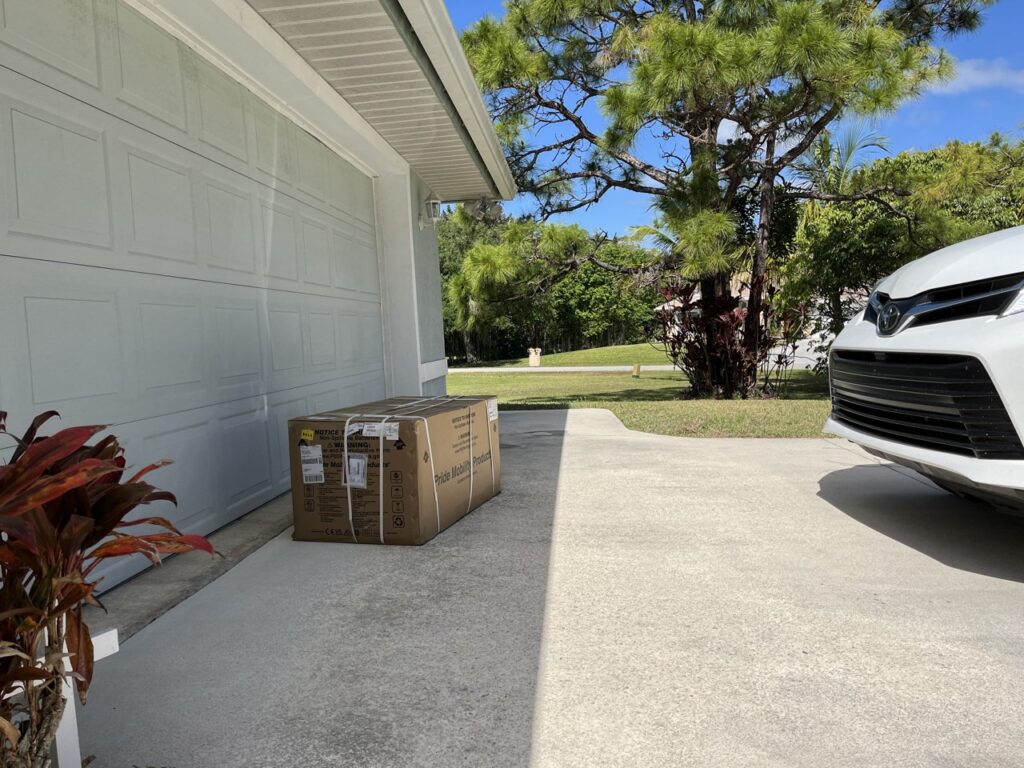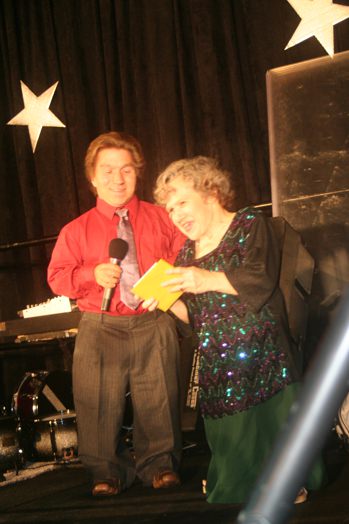
Normally I would be excited to see a delivery at my door within two days of the order—especially knowing that this delivery was my mobility scooter. But when I turned into the driveway and saw the scooter box in front of the garage door, I was extremely aggravated. There was no way my weight of 73 pounds could budge the 100 pound box, let alone move it out of the way!
Common sense should have told the driver that blocking entry to the garage was a really bad idea. In anticipation of this nonsensical package drop, I had tried to use the shipment tracking number to avoid this outcome. It didn’t work. Even so, I was grateful the package did not trap me inside the garage and prevent me from taking Robert to his kidney dialysis appointment.
Want to subscribe to receive blog updates sign up today!
I called the FedEx customer service toll free line to ask for a driver to come and move the package. However, the computerized menu did not have a pick for packages already delivered. After listening to the menu a few times, the closest choice was “something else.” Finally, the computer transferred me to a live person!
Although the customer service representative (CSR) was polite and apologetic, his approach fell far short of any solution. He used the tracking number to identify the station that delivered the package and sent them a message asking for a driver to come and move it. But he refused to give me a direct contact number or email address I could use to follow up with the station in the event nothing happened. At least I pried out of him the street address of the station that delivered the package.
When the package sat in front of my garage for another eight hours, I used this address to locate a direct phone number to speak with a CSR at the station where the package came from. The CSR claimed to have no knowledge of the message sent by the toll free CSR earlier in the day. His action was to call the owner of the station closest to where I live and get his commitment to send a driver to move the package first thing in the morning. This CSR also refused to share the name or phone number of the local station, thus depriving me of direct follow up if the package was not moved in the morning.
So what did I see when I looked first thing the next morning? The scooter package still sitting in front of the garage door! Once again FedEx failed to follow through. So I called a friend who works at FedEx and she located a driver willing to come and move the package. And I’m sure he would have come, but a cousin came by about the same time and offered to not only move the package, but also to assemble the scooter. Naturally, I accepted his offer and cancelled the service offer of my friend’s contact.
Have you fared any better getting a delivery company to correct their mistakes?
For more of Angela’s writings, please visit her website for links to her books, blog, and media at https://angelamuirvanetten.com.









